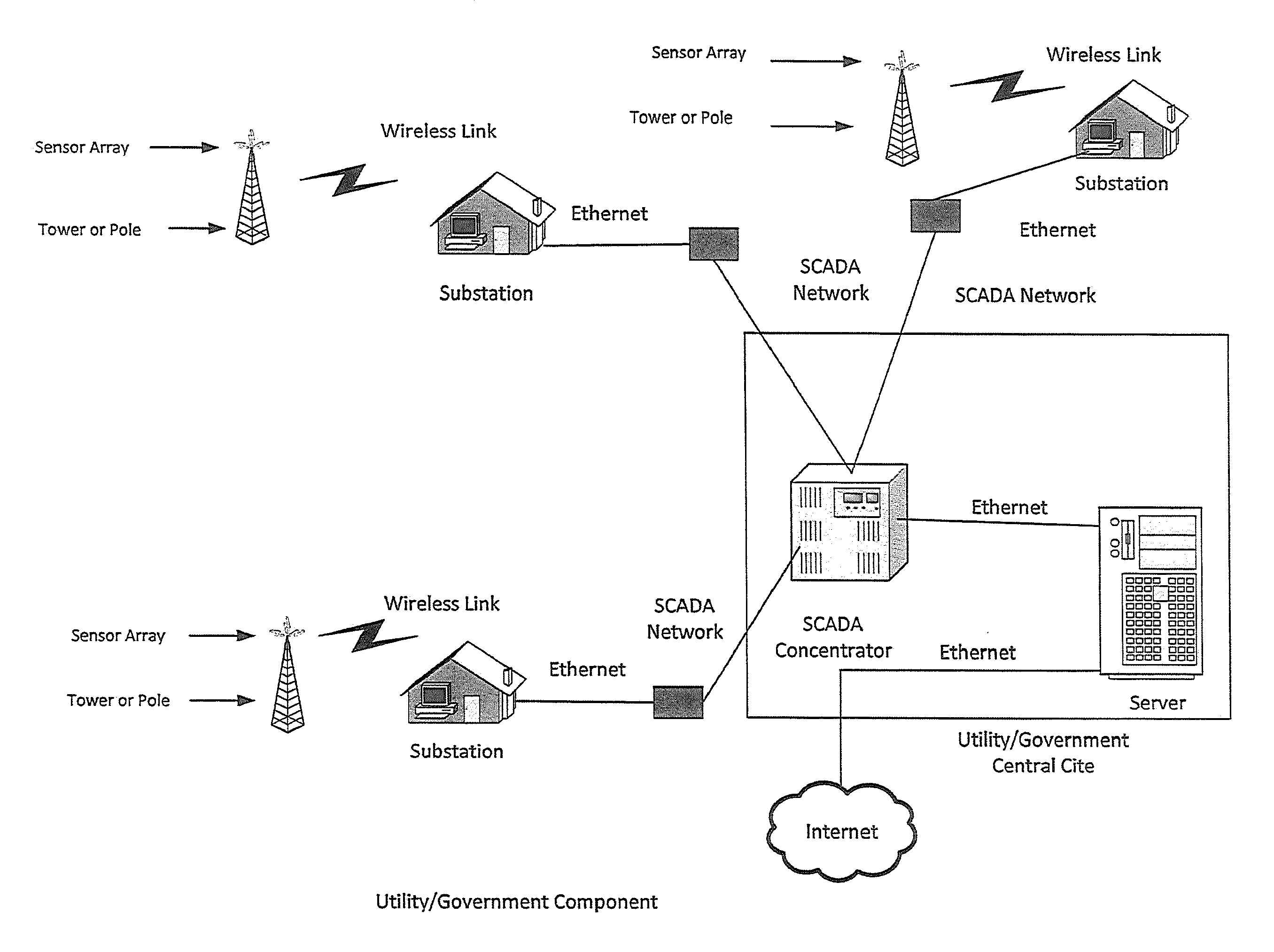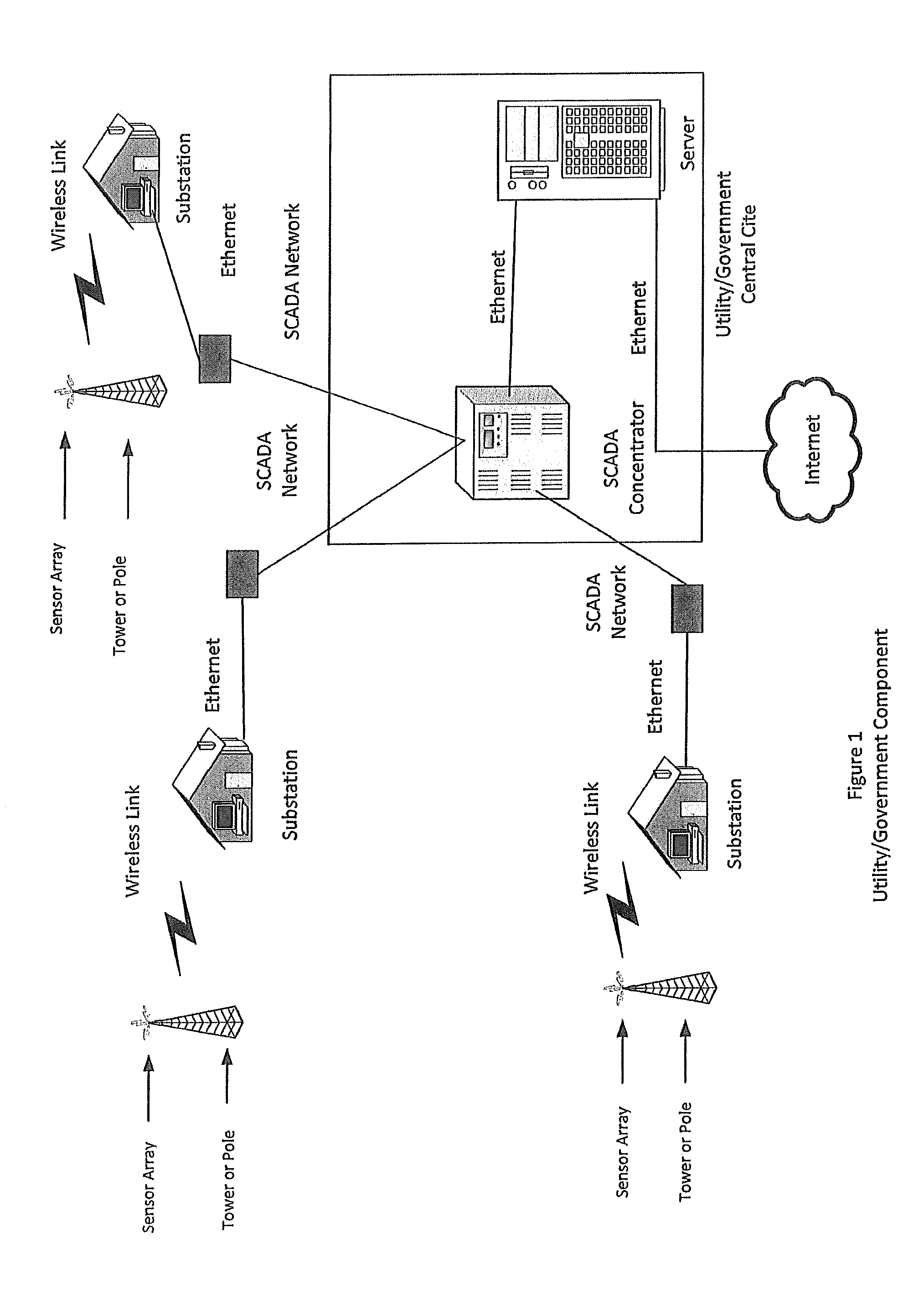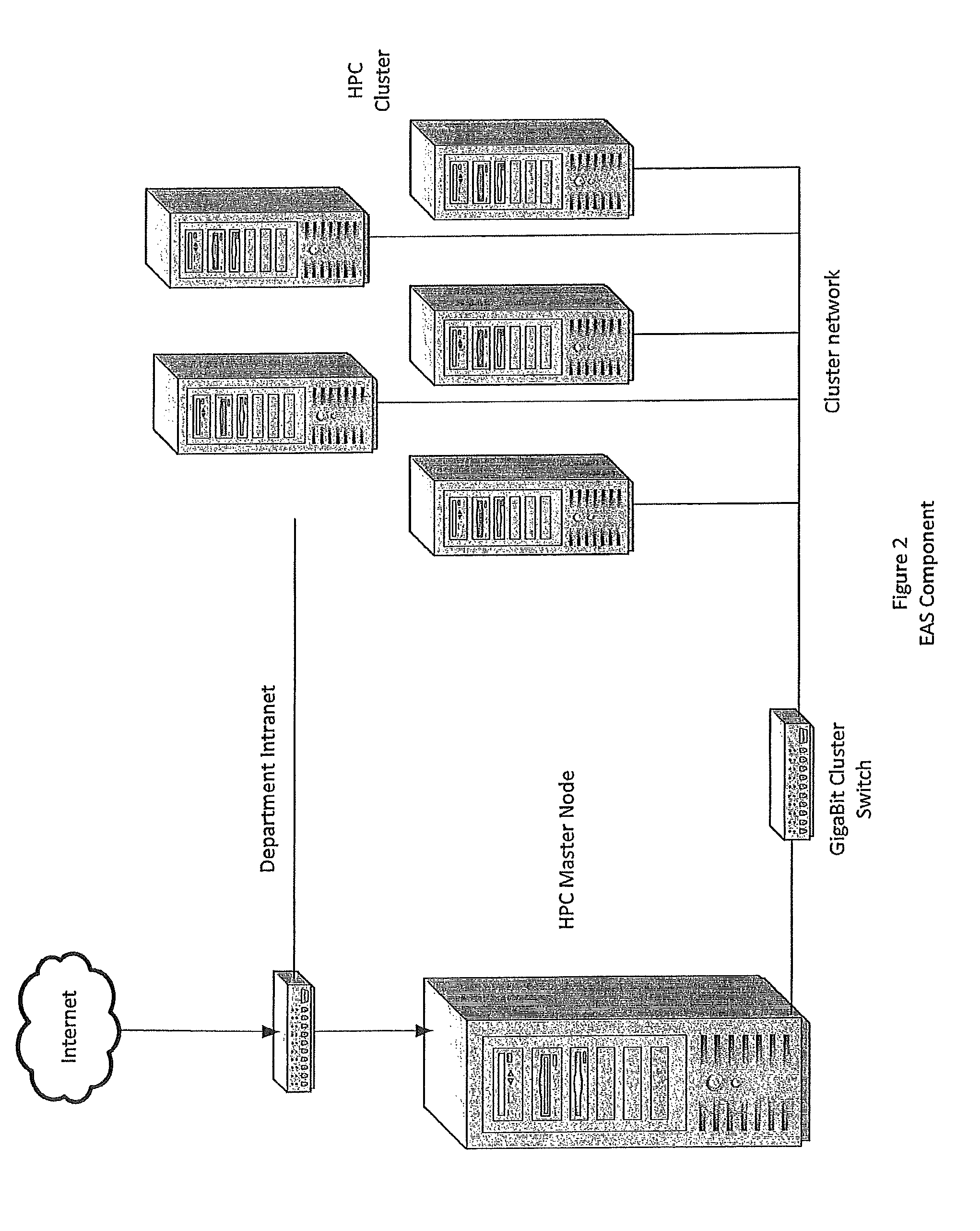Apparatus and method for providing environmental predictive indicators to emergency response managers
a technology of environmental prediction and indicators, applied in the field of apparatus and methods for providing environmental predictive indicators to emergency response managers, can solve problems such as high probability of danger and/or service outage periods
- Summary
- Abstract
- Description
- Claims
- Application Information
AI Technical Summary
Benefits of technology
Problems solved by technology
Method used
Image
Examples
Embodiment Construction
[0057]According to the embodiment(s) of the present invention, various views are illustrated in FIGS. 1-10 and like reference numerals are being used consistently throughout to refer to like and corresponding parts of the invention for all of the various views and figures of the drawing.
[0058]Data from all over the entire globe is typically utilized in order to make a forecast. Meteorological forecasting is performed in a global fashion. Global forecast data is available to forecasters around the world. There is a very large global model referred to as GFS, which stands for the Global Forecast System. Unfortunately, it is difficult to make that model work on a localized level in order to predict weather events accurately because the resolution of the model is very coarse—lacks sufficient resolution. Further, such a forecast system lacks the ability to factor in local parameters that may affect the accuracy of a prediction and further predict the impact that the weather event may cau...
PUM
 Login to View More
Login to View More Abstract
Description
Claims
Application Information
 Login to View More
Login to View More - R&D
- Intellectual Property
- Life Sciences
- Materials
- Tech Scout
- Unparalleled Data Quality
- Higher Quality Content
- 60% Fewer Hallucinations
Browse by: Latest US Patents, China's latest patents, Technical Efficacy Thesaurus, Application Domain, Technology Topic, Popular Technical Reports.
© 2025 PatSnap. All rights reserved.Legal|Privacy policy|Modern Slavery Act Transparency Statement|Sitemap|About US| Contact US: help@patsnap.com



